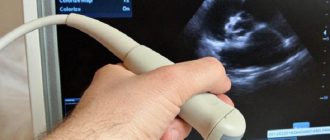Bone scintigraphy for prostate cancer is prescribed to identify possible metastases that have penetrated into the bone tissue of the musculoskeletal system.
After the introduction of a radioactive substance, a skeleton scan is carried out using special equipment. Places of greatest accumulation mean the spread of the disease through bone tissue.
Research is carried out only in laboratories equipped with modern equipment. The price of the study depends on the clinic, the qualifications of the specialist, the region of the study and can range from 4 to 13,000 thousand rubles.
The essence of the method
Bone scintigraphy is a method that helps to detect the spread of metastases in the early stages of the disease.
To carry out diagnostics, the patient is injected with a radioactive substance (marker), which accumulates in the bone tissue after several hours. It allows you to see areas where even the slightest pathologies have occurred.
The method is quite safe for the patient. The isotope administered for testing is a radionuclide, which has a 6-hour half-life and is completely eliminated from the body within 24 hours.
It is much more effective than conventional examination methods for oncology. With radionuclide diagnostics, it is possible to examine the entire skeleton, while with X-rays and computed tomography, only one area is examined.
When examining, it is much easier to distinguish metastases from the inflammatory process and disorders caused by arthrosis or benign formations:
- If the substance accumulates on the surface of a bone or joint, a benign tumor can be suspected.
- If the drug accumulates in the inner part of the bones, this indicates the presence of metastases.
Despite the fact that the method allows you to accurately determine the location of the lesion, it cannot be the main method of examination for making a diagnosis. For an accurate diagnosis, it is necessary to undergo additional tests and studies:
- biopsy;
- computed tomography;
- magnetic resonance imaging.
Bone scintigraphy for prostate cancer should be done within 5 years, but not more often than every 6 months. The examination can be carried out at the slightest sign of a change in condition, because the sooner metastases are detected, the easier it is to eliminate them. The radiation dose during the procedure is very small.
Indications
If prostate cancer is suspected, a scan is performed when:
- detection of changes in the condition of the organ on an ultrasound of the prostate (stones, a sharp decrease in volume, uneven edges);
- rapid weight loss with chronic prostatitis;
- elevated PSA.
Osteoscintigraphy is prescribed for preventive purposes already at diagnosis to prevent relapse.
Contraindications
Due to the fact that specific medications are used during diagnostics, there are various absolute contraindications and recommendations for postponing the procedure to a later date:
- An absolute contraindication is an allergic reaction to medications and concomitant diseases (bronchial asthma).
- Diagnosis is delayed if a barium examination has recently been performed (for example, an x-ray of the stomach).
Preparation
Carrying out the inspection does not require special preparation. There are several rules for taking medications before an examination that must be followed:
- 3 weeks before the procedure you need to stop taking medications containing iodine.
- Stop external use of iodine and bromine.
- A few days before the examination, stop taking erection-improving medications.
- Stop taking hormonal drugs and antitumor drugs.
Preparation for osteoscintigraphy for prostate cancer requires emptying the bladder half an hour before the procedure.
Carrying out
Scintigraphy for prostate cancer is carried out in 3 stages:
- Intravenous administration of a radioactive substance . The dosage of the drug is calculated based on the weight of the subject.
- Marker distribution . After administration, you need to drink plenty of fluids and move as much as possible. This is necessary to accelerate the spread of the substance. To remove excess amount of solution, you must empty your bladder in time.
- Scanning . The patient takes a supine position and is placed in a special device - a tomograph. During the procedure, you must maintain a stationary position so that the data in the image is not distorted. To do this, you can take sedatives.
The total duration of the procedure is 2-3 hours.
After the test, there is no need to take additional measures to remove the substance from the body; after a while this happens naturally during urination.
Decoding the results
As a result of the scan, an image of the entire skeleton or part of the area under study is obtained with the presence of hot and cold spots:
- Cold areas indicate poor blood supply to the area (blockage of blood vessels, benign tumor).
- Hot spots indicate bone destruction or inflammation.
Based on the indicators in these images, the doctor determines:
- number of affected areas;
- degree of bone tissue damage.
To determine the exact cause of the lesion, the doctor will prescribe additional examination and tests.



